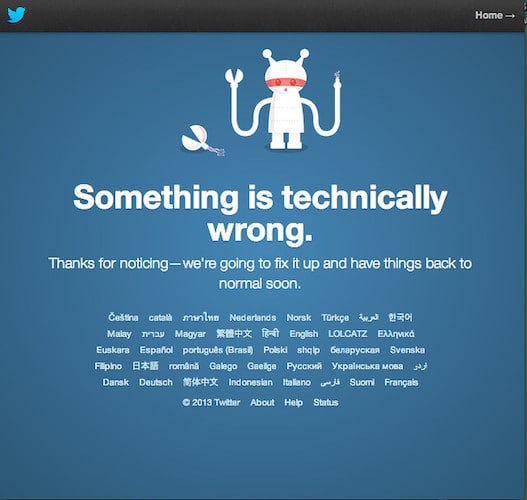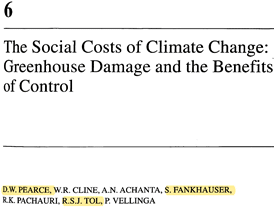I had an extraordinary Twitter Exchange with Richard Tol over the last few days. I’ve written this post to preserve that exchange in case, at a future date, Tol decides to delete his tweets. They provide a superb window into the thinking that lies behind mainstream economic modelling of climate change, and why this has led to humanity dangerously delaying taking action against climate change.
By the way, do please read the Wikipedia entry I linked to above, firstly because it gives a pretty realistic picture of Tol’s position on climate change—which aligns him with the “Skeptical Environmentalist” Bjorn Lomborg—and secondly because it is under dispute because it was substantially edited by Tol himself! That’s an enormous faux pas which, characteristically, Tol is incapable of appreciating. Here’s the Talk page on his entry:
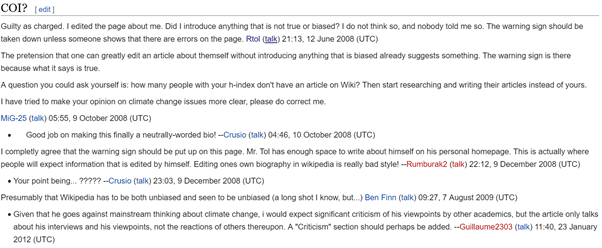
Figure 1: The discussion of Tol’s Wikipedia page in which he acknowledges that he wrote much of it himself.
For those who don’t know, Tol is one of the leading economists working on climate change. He is the author of the FUND “Integrated Assessment Model” (IAM) which is one of the key models used by the IPCC (Intergovernmental Panel on Climate Change) to assess the economic impacts of climate change.
Tol has also been an author of the economic impact sections of the IPCC Reports, especially the 1995 report {Bruce, 1996 #5707} in which the following observation was made:
Most estimates are for equilibrium climate change associated with a doubling of the preindustrial C02 equivalent concentration of all greenhouse gases. Best-guess central estimates of global damage, including nonmarket impacts, are in the order of 1.5=2.0% of world GNP for 2xCO, concentrations and equilibrium climate change. This means that if a doubling of C02 occurred now, it would impose this much damage on the world economy now…
Most models assume a nonlinear (convex) damage temperature relationship, resulting in damages of 6% or higher for 10°C warming. {Pearce, 1995 #5716, p. 183}
What? A 10°C increase in the average global temperature would reduce global GDP by a mere 6%? How on Earth did they come up with that figure? Even those who claim that the Sun is actually causing the rise in temperature, or that the temperature is actually falling, should see red with this claim. Humanity has never existed in, let alone experienced, a planet with that temperature. How on Earth would such a drastic change in temperature make such a tiny difference to GDP?
As the italicized section of the previous quote makes clear (“if a doubling of C02 occurred now, it would impose this much damage on the world economy now“), this is not the result of applying a high discount rate to future enormous damages: this is the actual estimate they made of how much lower GDP would be in a world with a 10°C higher average temperature (relative to pre-industrial levels), relative to one in which the global temperature was no different to pre-Industrial levels.
The reason, as I realised about two weeks ago when I read Tol’s article “The economic effects of climate change“, is that they are using data on GDP and temperature today across the globe (and primarily, across the USA) as a proxy for what will happen when global temperatures rise:
Mendelsohn assumes that the observed variation of economic activity with climate over space holds over time as well; and uses climate models to estimate the future effect of climate change… Like Mendelsohn, Nordhaus and Maddison rely exclusively on observations, assuming that “climate” is reflected in incomes and expenditures—and that the spatial pattern holds over time. {Tol, 2009 #5683, p. 32}
These regressions show a weak quadratic relationship between temperature and GDP today, which is why the “damage functions” in Nordhaus’s DICE model is a simple quadratic with a tiny coefficient. Nordhaus assumes that the decrease in GDP that will result from a change in temperature relative to pre-industrial levels is the change in temperature squared, multiplied by 0.00227 (or 0.227%):
The parameter used in the model was an equation with a parameter of 0.227 percent loss in global income per degrees Celsius squared with no linear term. This leads to a damage of 2.0 percent of income at 3°C, and 7.9 percent of global income at a global temperature rise of 6°C. {Nordhaus, 2018 #5691, p. 345}.
I was simply gobsmacked when I realised that this was the basis of the benign predictions of the impact of climate change on the economy that the IPCC parrots. I had thought that the cause would be something disputable, like different levels of discounting, or complicated, like the impact of the assumptions of the underlying Ramsey growth model (a foundation that all IAMs share with the RBC and DSGE models that #Irony did such an excellent job of warning about the Great Recession before it happened). But instead it was this mind-numbingly stupid assumption.
In case that isn’t obvious to you, here’s a little illustration using the opposite phenomenon—global cooling. The assumption that these “climate economists” made works both ways: if today’s temperature:GDP relationships can be used to predict the impact of global warming, they can also be used to predict what would happen with global cooling. That actually helps to put a handle on how monstrously stupid this assumption is, because while temperatures that many degrees above current levels haven’t been experienced for millions of years, temperatures 4 degrees below pre-industrial levels were experienced by our ancestors as little as 20,000 years ago—see Figure 2.
This visualisation by the Zurich University of Applied Sciences shows the extent of glaciers at the Ice Age peak 21,000 years ago—when the average global temperature was 9°C, versus the 14.4°C average today, and the 13.7°C pre-Industrial level.
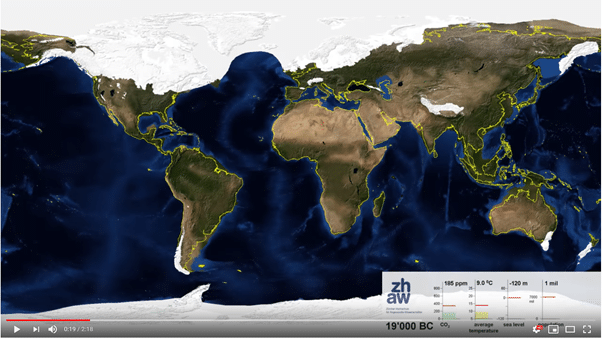
Figure 4: The Earth during the last Ice Age 21,000 years ago. Click here to see a time-lapse visualisation
So all of Canada, most of Europe, and a fair slab of the USA would be under glacial ice, if temperatures fell 5.4°C—or 4.7°C relative to pre-Industrial levels. How much does Nordhaus’s damage function reckon that GDP would fall, relative to a world that remained at today’s temperature?
There would be a 6.4% fall in GDP.
Let’s unpack that a bit. I’m sure Tol would dive in with a caveat here, that such a change would take centuries, and we’d have plenty of time to adapt—he made precisely the same case in reverse in our exchange over global warming. Sure, fine. But the concept underlying these “damage functions” is that they tell you what GDP would be in two different worlds: one where humans didn’t have to cope with temperature change at all, and GDP grew with today’s human wealth unaffected, and one where we do have to adapt to temperature change.
So let’s imagine two Earths, identical in all respects today and with identical technology in the future as well (because these Neoclassical models assume technology improves at an exogenously given rate, and is unaltered by climate change).
In the former world, all of today’s factories, houses, cities and indeed nation states can just continue. Resources are devoted to creating new capital via investment, but zero resources have to be devoted to moving technology from one place to another, or to replacing infrastructure.
In the latter world, with glaciers taking over such trifling human settlements as New York, Chicago, Minneapolis and Toronto, those cities would have to abandoned, along with all the factories that produce output there today, and either moved or rebuild closer to the Equator. The descendants of today’s roughly 150 million residents (37 million Canadians and about 100 million Americans) would have to move south too—maybe to Mexico, which I’m sure would be happy to accommodate them (pardon me, but I simply can’t maintain an academic straight face as I dissect this nonsense).
Imagine the scale of destruction of existing infrastructure that has taken two centuries to construct. Try to imagine the resources that would need to be devoted to shifting existing resources, or, more commonly, replacing resources that could not be shifted, and had to be abandoned to the advancing ice.
Imagine, just to make it a fair contest, that we had 500 years to do it—in line with the length of time that Tol thinks it would take for sea levels to rise 6 metres under global warming.
Do you really think that, after 500 years, the economy of the global cooling Earth would be just 6.4% smaller than the constant temperature Earth?
Of course not. So much of the Global Cooling Earth’s resources would need to be devoted to rebuilding, moving, resettling, etc., that there’s no way it would suffer just a 6.4% fall in GDP relative to its climate-change-free twin. A huge proportion of its resources would have to be devoted to replacing the infrastructure destroyed by the glaciers. It would be lucky to have any resources left to expand output.
These niceties are completely ignored by Tol, Nordhaus et al. with their crazy assumption that climate:GDP correlations today can be used to predict what will happen as global climate changes over time.
So though Tol, Nordhaus and friends have produced numerous seemingly scientific mathematical models of climate change and economics, they ignore the fact that such huge changes in climate will destroy much of the existing resources of the global economy, and require a huge proportion of our productive capacity to be devoted, not to expanding output, but to replacing capacity destroyed by climate change.
They are not scientists in any sense of the word, but fantasists who simply believe that the magic ingredient they describe as “the incredible adaptability of human economies” {Nordhaus, 1994 #5699, p. 48} will overcome any problems. All their models tell us is that they have faith—and a faith that bears no relation to the actual way in which capitalist economies function, nor to the threats that global warming will pose to the ecosphere as well as the economy.
As I note in the exchange with Tol, they are not climate change deniers, but climate change trivializers. Had they not poked their noses into this issue, human societies could well have started managing their impact upon the biosphere shortly after the Limits to Growth {Meadows, 1972 #4784} study was published in 1972. Instead, thanks to them unjustifiably undermining the credibility of that report, we have lost half a century of adaptation. Their attempts to eulogise capitalism may end up leading to its destruction.
So much for the prelude. Below are links to Tol’s tweets, as well as images of the exchanges in case Tol later deletes his tweets when it proves expedient to do so. After all, if he’s willing to edit his own Wikipedia page, it wouldn’t be surprising if he removed potentially incriminating tweets as well.
(In such case, you can download a PDF of this article here, which has screenshots of all of the tweets and may be easier to read given the large number them below. —MR Online Eds)
Narrator: A key part of Tol's work is to do the exact opposite.
— Richard Tol (@RichardTol) June 17, 2019
You highlighted two passages in which I discuss other people's work.
— Richard Tol (@RichardTol) June 17, 2019
@cwhope will be pleased to learn that I developed the PAGE model.
— Richard Tol (@RichardTol) June 17, 2019
You should listen to Steve, Chris. After all, he has never published on the topic, or any related one.
— Richard Tol (@RichardTol) June 17, 2019
Key Tweet: see next section
10K is less than the temperature distance between Alaska and Maryland (about equally rich), or between Iowa and Florida (about equally rich). Climate is not a primary driver of income.
— Richard Tol (@RichardTol) June 17, 2019
That's just speculation.
Let's take 6 metre sea level rise. What is the earliest year this could happen?
— Richard Tol (@RichardTol) June 17, 2019
What is the earliest date that sea level could be 6 metres above today's?
— Richard Tol (@RichardTol) June 17, 2019
You're so worried that you can't give a basic fact?
— Richard Tol (@RichardTol) June 17, 2019
Sea level will continue to rise long after temperature has stabilized. When do think it will hit 6m?
— Richard Tol (@RichardTol) June 17, 2019
Like Graham, you are so worried that you read everything you could find on the subject?
— Richard Tol (@RichardTol) June 17, 2019
So, what's the date then?
— Richard Tol (@RichardTol) June 17, 2019
This paper is as good as any https://t.co/nvfKmyDKPV
— Richard Tol (@RichardTol) June 17, 2019
Here's the key figure: 6m sea level rise is unlikely before 2500. pic.twitter.com/ADPNHpaVtk
— Richard Tol (@RichardTol) June 17, 2019
And here you can "see" the impact, if we forgot the Sumerian technology of dike-building: https://t.co/oI4FFEznrV
— Richard Tol (@RichardTol) June 17, 2019
although actually, the world map looks much like it does now pic.twitter.com/2ngmBXG91u
— Richard Tol (@RichardTol) June 17, 2019
Yeah, we found another so-called scholar who writes before he reads https://t.co/cvbqgK21XF
— Richard Tol (@RichardTol) June 17, 2019
Capital depreciation is less of a concern if you simultaneously consider capital formation.
— Richard Tol (@RichardTol) June 17, 2019
Follow on from key tweet
We'd move indoors, much like the Saudis have.
— Richard Tol (@RichardTol) June 17, 2019
You may argue that climate change is different, but all projections show that climate changes much more slowly than the other factors that affect the economy.
— Richard Tol (@RichardTol) June 17, 2019
That's not the point, Daniel. We observe that people thrive in very different climates, and that some thrive and others do not in the same climate. Climate determinism therefore has no empirical support.
— Richard Tol (@RichardTol) June 18, 2019
You guys are really all over the place, can't seem to tell the difference between 2K, 4K, 10K warming by next year, next century, next millennium.
— Richard Tol (@RichardTol) June 19, 2019
That's just speculation.
Let's take 6 metre sea level rise. What is the earliest year this could happen?
— Richard Tol (@RichardTol) June 17, 2019
What is the earliest date that sea level could be 6 metres above today's?
— Richard Tol (@RichardTol) June 17, 2019
You're so worried that you can't give a basic fact?
— Richard Tol (@RichardTol) June 17, 2019
Sea level will continue to rise long after temperature has stabilized. When do think it will hit 6m?
— Richard Tol (@RichardTol) June 17, 2019
You'd have centuries to do that.
— Richard Tol (@RichardTol) June 18, 2019
The questions were about economics, so it makes sense at ask economists.
Only three people had worked on the issue at the time, one was omitted, one was recused. Only Cline could reasonably be called an expert at the time.
— Richard Tol (@RichardTol) June 20, 2019
The core question was about economic impacts. If we've learned anything in 40 years of climate research, it is that geoscientists are generally clueless about economics.
— Richard Tol (@RichardTol) June 20, 2019
Academics come in three flavors, those who break it all to replace it with something better, those who build on others' work, and those who bitch.
— Richard Tol (@RichardTol) June 20, 2019
Shorter Keen: Economists can't predict. Listen to the Club of Rome instead! https://t.co/Z3zq9We6su
— Richard Tol (@RichardTol) June 20, 2019
It's a brilliant paper. If you omit the forecasts that were completely off, then one of the forecasts is roughly right, but the forecast that is right on one variable is wrong on another and vice versa.
— Richard Tol (@RichardTol) June 20, 2019
The @EJ_RES has a proud history of not allowing discussion.
— Richard Tol (@RichardTol) June 20, 2019
and wrongly so
— Richard Tol (@RichardTol) June 20, 2019
Limits to Growth had oil reserves of 455 billion barrels in 1970, projected to fall to zero between 1992 and 2022.
In 2019, oil reserves are 1665 billion barrels.
— Richard Tol (@RichardTol) June 20, 2019
Randers correctly cited the Bureau of Mines, AFAIK, so no need to apologize.
The difference between reserves and resources was well-established by 1965, including the processes that turned resources into reserves.
— Richard Tol (@RichardTol) June 20, 2019
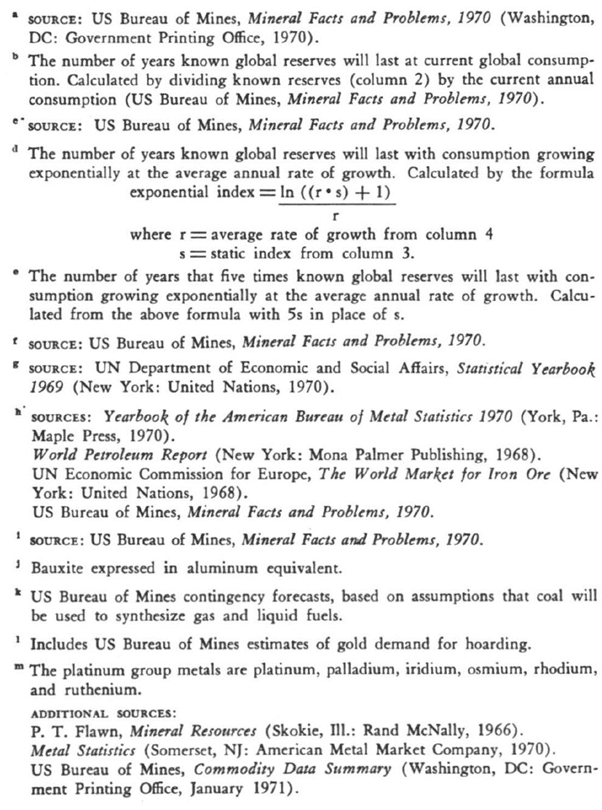
- Bruce, J. P., H. Lee, et al. (1996). Climate Change 1995: Economic and Social Dimensions of Climate Change, Intergovernmental Panel on Climate Change.
- Meadows, D. H., J. Randers, et al. (1972). The limits to growth. New York, Signet.
- Nordhaus, W. (1994). “Expert Opinion on Climate Change.” American Scientist 82(1): 45–51.
- Nordhaus, W. (2018). “Projections and Uncertainties about Climate Change in an Era of Minimal Climate Policies.” American Economic Journal: Economic Policy 10(3): 333–360.
- Pearce, D. W., W. R. Cline, et al. (1995). The Social Costs of Climate Change: Greenhouse Damage and the Benefits of Control. Climate Change 1995: Economic and Social Dimensions of Climate Change. Contribution of Working Group III to the Second Assessment Report of the Intergovernmental Panel on Climate Change. Cambridge, UK, Intergovernmental Panel on Climate Change: 183-224.
- Tol, R. S. J. (2009). “The Economic Effects of Climate Change.” The Journal of Economic Perspectives 23(2): 29–51.


